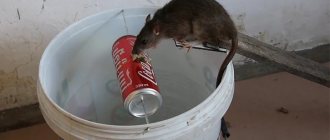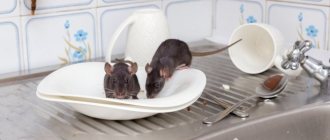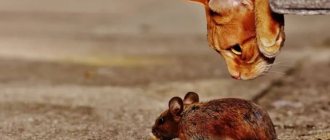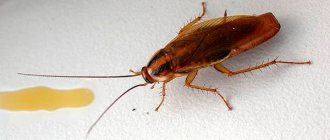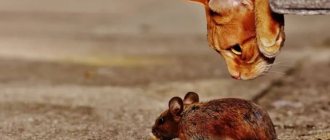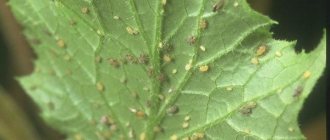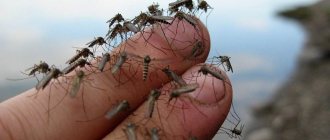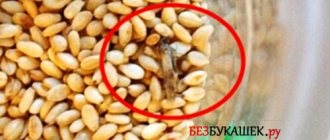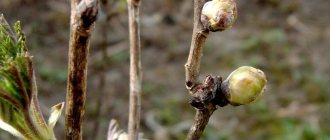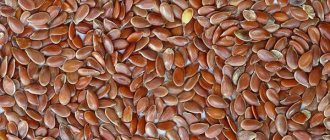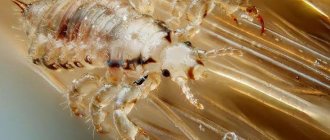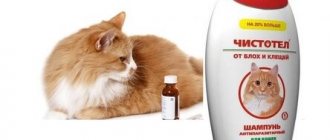In accordance with the work program of the Research Institute of Disinfectology of Rospotrebnadzor and the All-Russian Scientific and Methodological Center for Nonspecific Prevention of Infectious Diseases and Monitoring of the Resistance of Biological Agents to Disinfectants, which operates on its basis, work has been completed to study the sensitivity to insecticides of body lice and head lice.
It has been established that high resistance of lice to pyrethroids has developed on the territory of the Russian Federation - lice resistant to permethrin make up more than 95% of micropopulations collected in the country. None of the permethrin-based pediculicidal agents provides 100% acute action; there is no ovicidal effect.
A study of the sensitivity to insecticides of body and head lice from Moscow, St. Petersburg, Tambov, Kursk, Kazan, Novosibirsk, Khabarovsk, Khanta-Mansiysk and other cities by specialists from the Federal Budgetary Institution Research Institute of Disfectology of Rospotrebnadzor was carried out for 9 years.
The molecular genetic method has shown that lice with mutations that determine a decrease in the sensitivity of the nervous system to the action of pyrethroids are widespread in all local populations of head and body lice in all federal districts of Russia.
Currently, in the Register of State Registration Certificates (unified form of the Customs Union, Russian part), the share of pyrethroid-based products is about 40%.
At the same time, products based on substances with a different mechanism of action than pyrethroids remain effective: benzyl benzoate, organophosphorus compounds (malathion, fenthion), dimethicones, isopropyl myristate, clearol, substances of plant origin (anise, clove oils, neem oil, and some others) (Appendix 1 and 2).
In order to limit and completely eliminate the use of pediculicides based on pyrethroids for the treatment of head, body, and pubic lice, I ask you to use this information when monitoring the circulation of pediculicides, and also when working with the population and the media. Lists of approved pediculicides are presented in Appendices 1-5.
Annex 1
PRODUCTS FOR DESTROYING PYRETHROID-RESISTANT HEAD AND PUBIC LICE
Polydimethylsiloxanes
- pediculicide "HEDRIN" 77.99.1.2.U.4547.6.10 dated 06/29/2010 dimethicone - 4% "Thornton and Ross Ltd.", "Thornton and Ross Ireland Ltd." (Great Britain)
- pediculicidal agent “D-95” of the trademark “911 Your Rescue Service” RU.77.99.88.002.E.002023.04.17 dated 04/27/2017 dimethicone 87.7%; CJSC "TWINS Tech", (Russian Federation)
- pediculicidal agent "Nyuda®" RU.77.99.88.002.E.012895.12.14 dated 12/29/2014 dimethicone 92%, Germany
- pediculicidal agent "Paranit® Sensitive" (Paranit® Sensitive) RU.77.99.88.002.E.004749.06.14 dated 06.20.2014 oxyphthyrin complex, including dimethicone -4% "Cefaro Ireland Limited", (Ireland) and "Megenix Benelux" » (Belgium) «Laboratories Wilson» (France)
- pediculicidal product “Hedrin Once (Hedrin Vance)” in two forms Liquid Gel (liquid gel), Spray Gel (spray gel) RU.77.99.88.002.E.010406.11.15 dated November 26, 2015 dimethicone, 4%, nerolidol, 2% ; "Thornton & Ross Ltd", (UK)
- pediculicidal agent “Full Marks” (“Full Marks”), RU.77.99.88.002.E.000357.01.18 dated 01/26/2018 isopropyl myristate -50%, cyclomethicone 50% “Reckit Benckiser Healthcare” (UK)
- pediculicidal agent “Nitolic” (“Nitolic”), RU.77.99.88.002.E.000462.02.18 dated 02/01/2018 isopropyl myristate -72.5%, “ICB Pharma” (Poland)
- pediculicidal agent - “Clean Life” RU.77.99.88.002.E.005564.07.13 from 07/08/2013 polydimethylsiloxanes, 47%; LLC "NPO "VELT", (Russian Federation)
- pediculicidal product "Duranit anti-pediculosis lotion for hair" RU.77.99.88.002.E.005135.06.13 from 06.28.2013 dimethicone - 6%, cyclopentaxyloxane - 94%, "Drog Ekza Tibbi Malzeme" (Turkey)
- pediculicide "PARADISE ULTRA" RU.77.99.88.002.E.002037.05.18 dated 05/21/2018 dimethicone, 4%, isoparaffins, 96%, Mirrolla LLC, (Russian Federation)
Mineral oils
- pediculicidal agent “Shampoo “Deparazin® Ultra” RU.77.99.88.002.E.000369.01.16 from 01/28/2016 petroleum jelly, 56.5%; BIOPHARMRUS LLC, (Russian Federation)
- pediculicidal product “Shampoo “Pedikulen Ultra” RU.77.99.88.002.E.008118.09.14 from 09.19.2014 petroleum jelly - 55%; BIOPHARMUS LLC, (Russian Federation)
- pediculicidal product Paranit® Shampoo (Paranit® Shampoo) RU.77.99.88.002.E.012487.12.14 dated 12/22/2014 clearol (mineral oil) - 69.25%; Chefaro Ireland Limited, (Ireland) Chefaro Ireland Limited, Ireland (Ireland) and Megenix Benelux (Belgium) Bittner Pharma LLC, (Russian Federation)
- pediculicidal product Paranit® Lotion (“Paranit® Lotion”) RU.77.99.88.002.E.012486.12.14 dated December 22, 2014 isopar (mineral oil) - 96%, dimethicone - 4%, Chefaro Ireland Limited, (Ireland) Chefaro Ireland Limited, Ireland (Ireland) and Megenix Benelux (Belgium) Bittner Pharma LLC, (Russian Federation)
- pediculicidal product Paranit® Spray (“Paranit® Spray”) RU.77.99.88.002.E.012485.12.14 dated December 22, 2014 isopar (mineral oil) - 96%, dimethicone - 4%, Megenix Benelux (Belgium) LLC " Bittner Pharma", (Russian Federation)
Benzyl benzoate
- pediculicidal agent "Foxilon spray" RU.77.99.21.002.E.011175.07.12 dated 07/05/2012 benzyl benzoate, 20% NPC "FOX & Co" LLC, (Russian Federation)
- pediculicidal agent "Foxilon lotion" RU.77.99.01.002.E.027606.07.11 dated 07/18/2011 benzyl benzoate, 20% Scientific-Production LLC, (Russian Federation)
Neem oil
- pediculicidal product "Leisner" RU.77.99.88.002.E.001143.03.17 from 03/09/2017 neem oil 10%, "Pronova Laboratories BiVi", (Netherlands)
Essential oils
- pediculicidal agent “Paranit” RU.77.99.27.002.E.043822.10.11 dated 10/20/2011 anise oil (in terms of trans-anethole), 15%, “Teva Pharmaceutical Industries”, (Israel)
- insecticidal agent "MEDILIS-bio for lice" RU.77.99.37.002.E.002102.02.11 dated 02/09/2011 clove oil - 10% LLC "Laboratory MediLIS", (Russian Federation)
- pediculicidal product "Pedikulen® Ultra" RU.77.99.88.002.E.007718.08.13 dated 08/27/2013 anise oil - 6 LLC "BIOPHARMUS", % (Russian Federation)
Alcohols
- pediculicidal product "Hedrin Treat & Go" in three forms Lotion (lotion), Spray (spray), Mousse (mousse) RU.77.99.88.002.E.010405.11.15 dated November 26, 2015 1.2 octanediol , 5%, caprylic/capric glycerides (PEG 6) 15%; Thornton & Ross Ltd. (Great Britain)
Organophosphorus compounds
- insectoacaricidal agent "Sulfox" RU.77.99.21.002.E.012445.08.12 dated 08/10/2012 fenthion 20% k.e. LLC NPC "FOX & Co", (Russian Federation)
- insectoacaricidal agent “Dobrokhim FOS” RU.77.99.88.002.E.006398.08.13 dated 08/05/2013, fenthion 20% e.e. LLC "Dobrokhim", (Russian Federation)
- insectoacaricidal agent "Medilis-super" RU.77.99.88.002.E.017368.12.12 dated 12/25/2012 24% e.e. water-based fenthion LLC "Laboratory MediLIS", (Russian Federation)
- insectoacaricidal agent Medilis-Permifen" RU.77.99.88.002.E.008546.10.13 dated 10.23.2013 20% e.e. (fenthion - 16%, permethrin - 4%) LLC "Laboratory MediLIS", (Russian Federation)
- insecticidal agent "Forsyth - anti-louse" RU.77.99.21.002.E.012959.08.12 dated 08.28.2012 10% q.e. mixtures of fenthion and permethrin. (fenthion - 7%, permethrin - 3%) Alina Nova Prof LLC, (Russian Federation)
- insectoacaricidal agent “Clinch” 77.99.23.2.U.341.1.10 dated 01/26/2010 mixture of fenthion and permethrin 20% a.e. (fenthion - 7%, permethrin - 13%) Dobrokhim LLC, (Russian Federation)
- insectoacaricidal agent "Medilis - Malathion" RU.77.99.88.002.E.005275.06.13 dated 06.28.2013 40% e.e., malathion LLC "Laboratory MediLIS", (Russian Federation)
- insectoacaricidal agent “Dobrokhim M” RU.77.99.88.002.E.000104.01.14 dated 01/15/2014 malathion 57% ke., Dobrokhim LLC, (Russian Federation)
- pediculicidal product “Veltotrin Lotion” RU.77.99.19.002.E.006964.04.12 dated 04/23/2012 permethrin, 1%, malathion, 0.3%; LLC "NPO "VELT", (Russian Federation)
Appendix 2
In what cases is processing carried out?
Anti-pediculosis treatment is carried out for children and adults who have been diagnosed with any type of lice. Sanitary measures to remove parasites from the surface of the patient’s body are strictly regulated by Order No. 342.
Medical personnel of the infectious diseases department, who provide therapeutic care, are required to carry out the preparatory stage, the main procedure and the final stage of anti-pediculosis manipulations. These actions are aimed not only at localizing foci of head lice, but also at preventing the spread of other infectious diseases spread by lice.
CONTENTS OF THE PACK FOR ANTI-PEDICULOSIS MEASURES
- An oilcloth or cotton bag for collecting the patient's belongings.
- Galvanized bucket or tray for burning or disinfecting hair.
- Oilcloth drape.
- Rubber gloves.
- Scissors.
- A fine comb (preferably metal).
- Hair clipper.
- Alcohol lamp.
- Headscarves (2-3 pieces).
- Cotton wool.
- Table vinegar or 5-10% acetic acid.
- Magnifier
- Means for the destruction of head and pubic lice that have a 100% ovicidal effect (ovicides) with a single treatment (“Medilis-bio”, “Foxilon lotion”, “Para-PLUS”, emulsion concentrates based on fenthion (“Sulfox”, “Medilis- super”, etc.).
- Products that have an incomplete ovicidal effect, which require double treatment with an interval of 7-10 days (Foxilon-spray, Paranit lotion, Paranit spray, Nyuda, etc.).
- Products for the destruction of body lice (emulsion concentrates based on fenthion - “Sulfox”, “Medilis-super”, “Clinch”, “Foresight-anti-louse”, “Dobrokhim FOS”, malathion “Dobrokhim M”, “Medilis - Malathion”).
- Means for disinfestation of premises (con, “Medilis-super”, “Clinch”, “Foresight-anti-louse”, “Dobrokhim FOS”, “Medilis-permifen”, etc.).
Appendix 4
Why is it important to follow order No. 342
Pediculosis is a rapidly spreading and dangerous disease, the development of which can be accompanied by simultaneous outbreaks of concomitant infectious diseases.
It is extremely important that the norms of Order No. 342 are observed for the following reasons:
- Due to their jumping ability, lice are very contagious and quickly spread among different segments of the population.
- First of all, the parasite affects closed social groups (families, kindergartens, schools, military barracks, prisons).
- Even after a person has completely recovered from lice, his personal belongings remain a source of infection for another 90 days. Under conditions of maintaining a comfortable temperature, individual individuals, as well as their larvae, can remain viable.
- Children of the younger and middle age groups and adolescents are at risk of developing head lice.
- In Russia, the main spreaders of pediculosis are labor migrants.
- Lice are carriers of a number of infectious diseases such as typhus, relapsing fever, Volyn fever, and Brill's disease.
- The spread of pediculosis is rapid. Without timely adoption of adequate response measures, the epidemiological situation can easily get out of control.
- Without proper treatment, lice soon completely take over the body of their host, reaching the maximum population size.
Compliance with the norms of Order No. 342 is very important for the reason that its creation was a requirement of the difficult epidemiological situation that developed in Russia in 1998. During this period of time, 300 thousand patients with head lice were recorded on the territory of the Russian Federation. At the same time, the body was infected with different types of lice. Only 25% of the total number of cases of head lice were adults. The most difficult situation has developed in schools, kindergartens, and boarding schools. After the norms of Order No. 342 were put into effect, the epidemiological situation completely changed.
PROHIBIT USE COMPLETELY
Ready-to-use pediculicides based on pyrethroids (permethrin, tetramethrin, d-phenothrin):
- pediculicidal product "Pedilin" in the form of shampoo RU.77.99.27.002.E.001414.01.12 dated 01/20/2012 permethrin 1% DV; KRKA, (Slovenia)
- pediculicidal agent “Higia” for the fight against head and pubic lice (in the form of shampoo) RU.77.99.23.002.E.013494.05.11 dated 05/10/2011 permethrin 1% DV; JSC "Medika" (Bulgaria)
- pediculicidal agent “Nittifor-cream” RU.77.99.01.002.E.041440.10.11 dated 10/05/2011 permethrin 1% DV; "Pharmaceutical plant Teva Private Co. Ltd.", (Hungary)
- pediculicidal shampoo “Veda” RU.77.99.01.002.E.039178.09.11 dated 09/22/2011 permethrin 0.4% DV; CJSC Experimental-Production (CJSC DDD), (Russian Federation)
- pediculicidal agent "Veda-2" RU.77.99.01.002.E.000438.01.11 dated 01/19/2011 permethrin 0.5% DV, Experimental-Production CJSC (DDD CJSC), (Russian Federation)
- pediculicidal agent “DIS” RU.77.99.01.002.E.002699.02.11 dated 02/15/2011 permethrin 0.7% DV, tetramethrin 0.5% DV, pyriproxyfen 0.05% DV; CJSC Experimental-Production (CJSC DDD), (Russian Federation)
- pediculicidal agent "Medifox - pediculicidal gel" RU.77.99.55.002.E.032909.08.11 dated 08/17/2011 permethrin 1% DV; LLC NPC "FOX & Co", (Russian Federation)
- pediculicidal agent “Samarovka-lotion” RU.77.99.01.002.E.003320.02.11 dated 02/21/2011 permethrin 0.2% DV; Samarovo LLC, (Russian Federation)
- pediculicidal product “Hygea - pediculicidal shampoo” RU.77.99.01.002.E.001247.02.11 dated 02/01/2011 permethrin 0.9% DV; Samarovo LLC, (Russian Federation)
- pediculicidal agent “Mirrolla permethrin “FORA+” RU.77.99.88.002.E.003250.04.14 dated 04/24/2014 permethrin 1.5% DV; LLC "Mirrolla" (Russian Federation)
- insecticidal agent "Zitol-spray" RU.77.99.27.002.E.050158.12.11 from 07.12.2011 permethrin 0.3% DV JSC "NPF "Ekoprom", (Russian Federation)
- insecticidal soap “VITAR” RU.77.99.01.002.E.040057.09.11 dated 09/27/2011 permethrin 0.5% DV; CJSC, (Russian Federation)
Appendix 5
What does Order No. 342 regulate?
Order No. 342 contains detailed information on how government agencies can effectively prevent head lice and counter the spread of lice among the country's population. This by-law describes the problem of this parasitic disease and the danger of its complications in the absence of timely treatment.
The appendices to order No. 342 are methodological manuals for medical personnel of infectious disease departments who treat patients with head lice. This document outlines a step-by-step procedure for the actions of workers in medical institutions in terms of preparing, as well as providing assistance to patients infected with various types of blood-sucking insects.
Examination for lice
Medical workers are required to conduct head lice inspections in preschool educational institutions once a month, at school after the holidays, and selectively by class every month. At enterprises, institutions, and organizations, mandatory inspections must also be carried out twice a year.
According to the order of the Ministry of Health, it is mandatory to carry out a preventive examination of patients at the sanitary inspection station when placing a patient for inpatient treatment or in a maternity hospital. The inspection procedure involves the use of a fine-toothed comb, a magnifying glass or a magnifying glass.
How is processing carried out according to SanPiN
Anti-pediculosis styling according to SanPin requires a preliminary examination of the patient. A nurse who discovers signs of lice infestation in a person must follow the established algorithm of actions.
Preparation
At the stage of preparation for anti-pediculosis styling, a medical worker will need the following things and consumables:
- clean robe;
- anti-pediculicidal drug;
- disposable gloves;
- waterproof oilcloth apron;
- oilcloth;
- metal comb;
- cotton towel.
Anti-pediculosis styling according to SanPin
Preparation for the anti-pediculosis styling procedure is as follows:
- Wear a gown and disposable medical gloves.
- Attach a waterproof oilcloth apron to the body.
- Conduct a conversation with the patient, explaining to him the specifics of this procedure.
- Obtain the patient's consent to perform anti-pediculosis manipulations.
- Cover the chair with oilcloth, and then seat the patient on it.
- A person with pediculosis takes a clean cotton towel in his hands to protect his eyes from the pediculicide. If the patient is in a very weakened state, then his organ of vision is covered by a health worker.
After all actions aimed at preparing for the fight against lice have been completed, the nurse proceeds to the main stage of anti-lice therapy.
Carrying out the procedure
The stage of carrying out the main part of the anti-pediculosis procedure requires compliance with the following algorithm of actions:
- Treat the patient's hair with an anti-lice medication, which was included in the anti-lice treatment. Apply the medication strictly in the amount specified in its instructions for use.
- Cover the patient's hair with a pre-prepared scarf, scarf or special cap.
- Leave the patient's head covered for 20 minutes to allow the active substance of the pediculicide to take effect.
- Rinse the patient's hair under a stream of warm water and then dry it using a clean, dry towel.
- Comb the patient's scalp with a metal comb, evenly separating all strands. The duration of this procedure is 15-20 minutes.
During the combing process, dead lice as well as their larvae are removed from the patient's head. While performing these actions, the nurse has the opportunity to independently verify the effectiveness of the drug used in the fight against parasites.
Final stage
At the final stage of anti-pediculosis styling, the following actions must be performed:
- Remove the patient's clothes and bedding, and then put them in a separate bag for further disinfestation.
- Take off your gown, disposable gloves and oilcloth apron, placing them in another container for disinfestation.
- Wash your hands thoroughly using soap and warm water.
- Make a note in the patient's inpatient medical record that he has been diagnosed with lice. A corresponding mark in the form of the letter “P” is placed on the title page of this documentation.
- Submit an emergency notification to the sanitary and epidemiological authority at the location of the infectious diseases department. In this case, the medical worker fills out form No. 058u.
- After completing the above documentation, the nurse returns to the patient to re-examine the patient's dry hair.
- Disinsection of the room in which medical procedures to combat head lice was carried out is carried out.
The metal comb that was used to comb out lice is doused with boiling water or wiped with a 70% concentration of ethyl alcohol solution. All objects with which the patient has been in contact are treated with pediculicidal medications.
It is possible to defeat parasites!
Antiparasitic Complex® - Reliable and safe removal of parasites in 21 days!
- The composition includes only natural ingredients;
- Does not cause side effects;
- Absolutely safe;
- Protects the liver, heart, lungs, stomach, skin from parasites;
- Removes waste products of parasites from the body.
- Effectively destroys most types of helminths in 21 days.
There is now a preferential program for free packaging. Read expert opinion.
Read further:
Sanitation for pediculosis: algorithm for treating the patient and the room
Shampoo for head lice: list of the best products for preventing head lice
How long do lice live on clothes and outside a person’s head?
What lice and nits look like on human hair, in adults and children
Echinococcosis and Alveococcosis: main differences, routes of infection and symptoms
Pediculosis in a child: main signs and treatment methods
